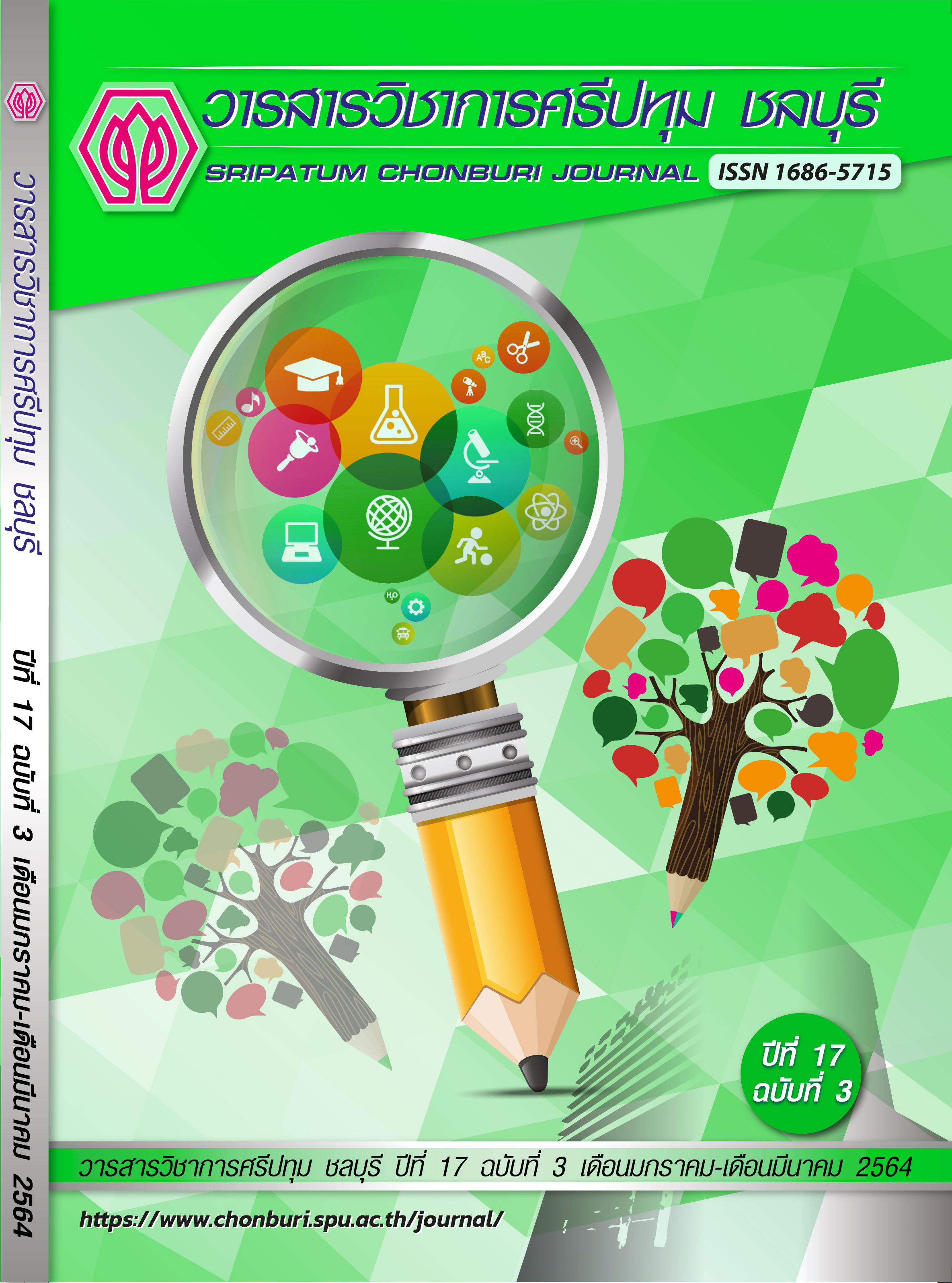THE DEVELOPMENT OF SOCIAL MEDIA ONLINE AWARENESS MEASUREMENT LITERACY: ANALYSIS FOR TEACHER’S PRATHOMSUKSA 6
Keywords:
social media online, social media awareness, social media online awareness measurement.Abstract
The purpose of this research were: to create indicators and social media online: analysis awareness measurement literacy for teacher’s Prathomsuksa 6 and to verify the quality of the indicator and social media online: analysis awareness measurement literacy for teacher’s Prathomsuksa 6. The population for the research were 45 computer’s teachers selected by multi stage sampling. The research instrument were: 1) questionnaire by experts on social media online awareness measurement literacy for teacher’s Prathomsuksa 6; 2) suitability assessment of social media online awareness measurement literacy for teacher’s Prathomsuksa 6; 3) consistency Index assessment; and 4) social media online awareness measurement literacy for teacher’s Prathomsuksa 6. The statistics were analyzed data mean, standard deviation, median and interquartile range.
The research results were following: 1) social media online awareness measurement literacy for teacher’s Prathomsuksa 6 were first indicator tell or explain, distinguish facts, persuade, present news exaggerated information, second indicator tell the advantages and disadvantages to yourself and others, third indicator tell the difference between the editing and the actual image, and fourth indicator distinguish which online news and articles were real or made up; 2) the quality of the indicator and social media online: analysis awareness measurement literacy for teacher’s Prathomsuksa 6 at a high level, mean 4.16, median 4.00-5.00, IR 0.00-1.00; and 3) social media online: analysis awareness measurement literacy for teacher’s Prathomsuksa 6 at a high level, mean 3.55.
References
กิติมา สุรสนธิ. (2553). ความรู้ทางการสื่อสาร (พิมพ์ครั้งที่ 3). กรุงเทพฯ: คณะวารสารศาสตร์และสื่อสารมวลชน มหาวิทยาลัยธรรมศาสตร์.
ณัฐนันท์ ศิริเจริญ. (2557). การสื่อสารเพื่อการรู้เท่าทันสื่อและสารสนเทศจากสื่ออินเทอร์เน็ตของนักศึกษาระดับปริญญาตรี. วิทยานิพนธ์ปรัชญาดุษฎีบัณฑิต สาขาวิชานิเทศศาสตร์, สำนักบัณฑิตศึกษา มหาวิทยาลัยสุโขทัยธรรมาธิราช.
สาริศา จันทร์อำพร. (2558). ภาวการณ์ปัจจุบันกับการเสริมสร้างการรู้เท่าทันสื่อสังคมออนไลน์ในวัยรุ่น. วิทยานิพนธ์ศิลปศาสตรมหาบัณฑิต สาขาวิชาจิตวิทยาการศึกษาและการแนะแนว, คณะศึกษาศาสตร์ มหาวิทยาลัยเกษตรศาสตร์.
สำนักงานคณะกรรมการกิจการกระจายเสียง กิจการโทรทัศน์ และกิจการโทรคมนาคมแห่งชาติ. (ม.ป.ป.). เรื่องน่ารู้เพื่อผู้บริโภค: รู้เท่าทันสื่อ คืออะไร (ออนไลน์). เข้าถึงได้จาก: http://bcp.nbtc.go.th/th/detail/2017-01-24-23-12-51 [2562, 10 ธันวาคม].
สำนักงานกองทุนสนับสนุนการสร้างเสริมสุขภาพ (สสส.). (2555). ทักษะและเทคนิคขั้นตอนในการรู้เท่าทันสื่อ (ออนไลน์). เข้าถึงได้จาก: https://www.thaihealth.or.th/Content/20473-ทักษะและเทคนิคขั้นตอนในการรู้เท่าทันสื่อ.html [2563, 18 มีนาคม].
Ezeugbor, Carol O. (2019). Assessment of teaching quality: Survey of university undergraduate students in Nigeria. Awka, Nigeria: Department of Educational Management and Policy, Nnamdi Azikiwe University.
Center for Media Literacy. (2008). Media literacy: A definition and more (Online). Available: www.medialit.org/media-literacy-definition-and-more [2020, March 11].
Kashkouli, Z., Barati, H., & Ansari, D. N. (2015). Test-taking strategies and item specifications: Focusing on a high-stake test. International Journal of Research Studies in Education, 4, pp. 43-56.
Downloads
Published
Issue
Section
License
บทความทุกบทความเป็นลิขสิทธิ์ของวารสารวิชาการศรีปทุม ชลบุรี



